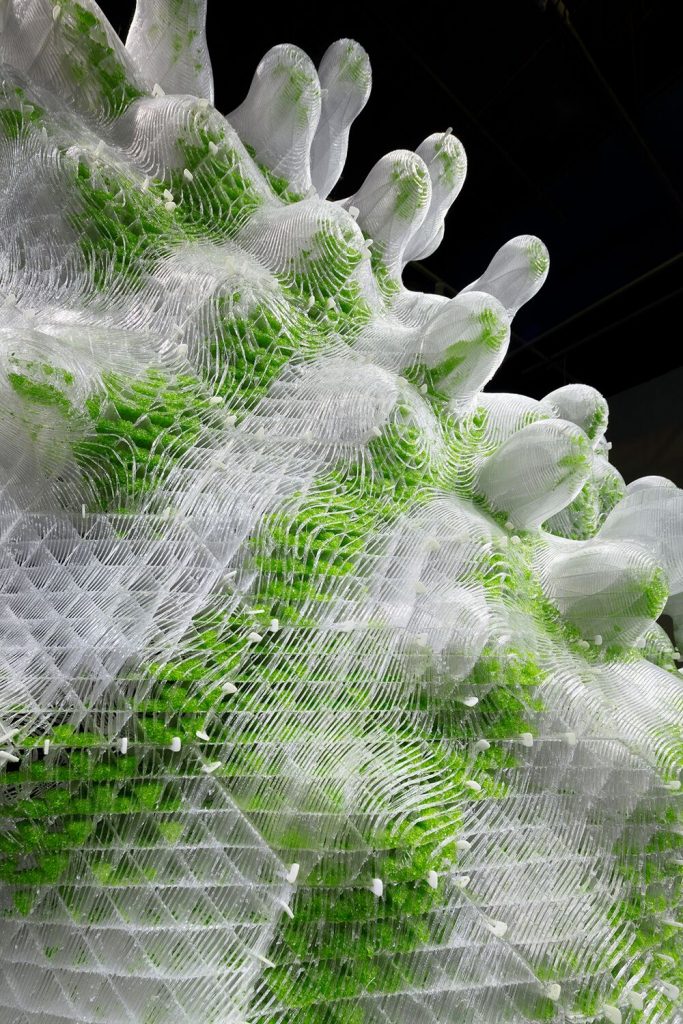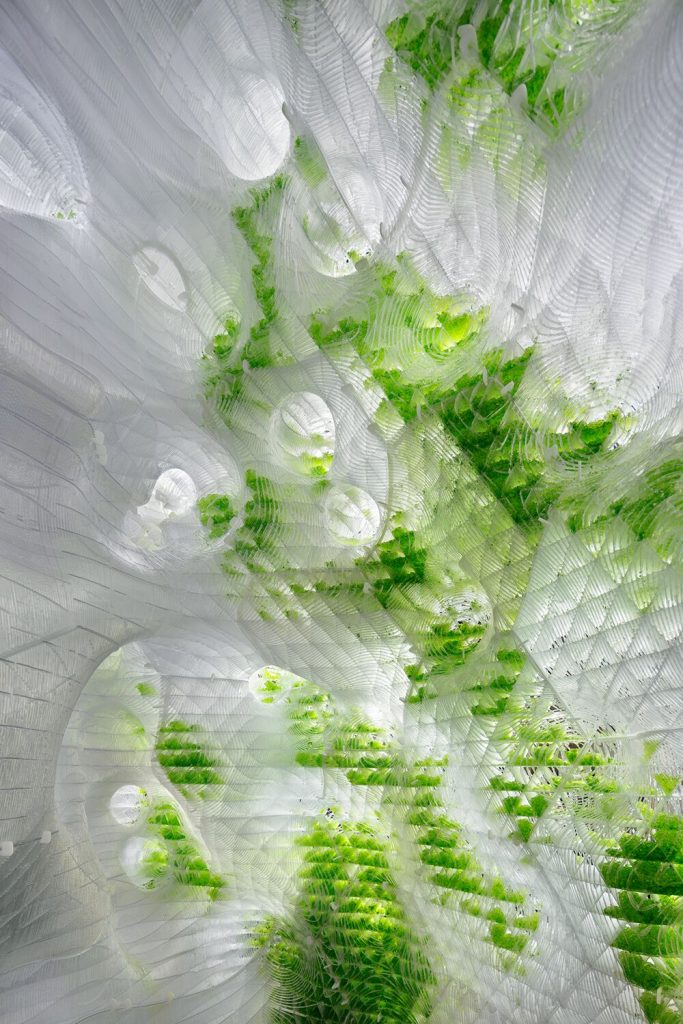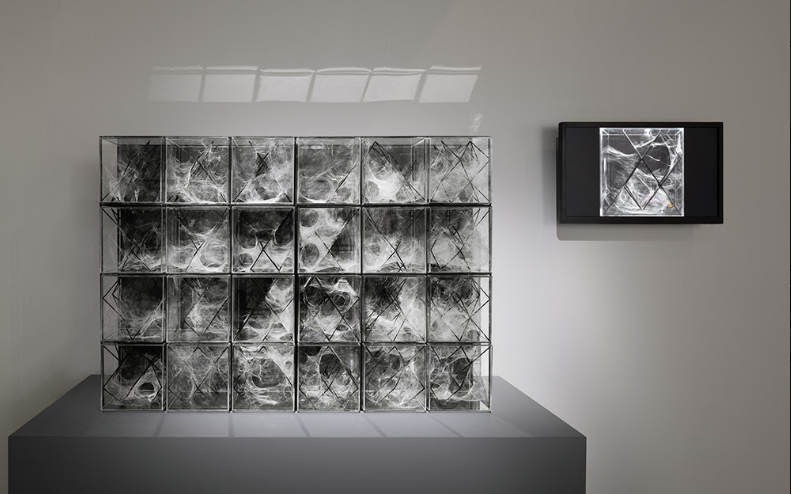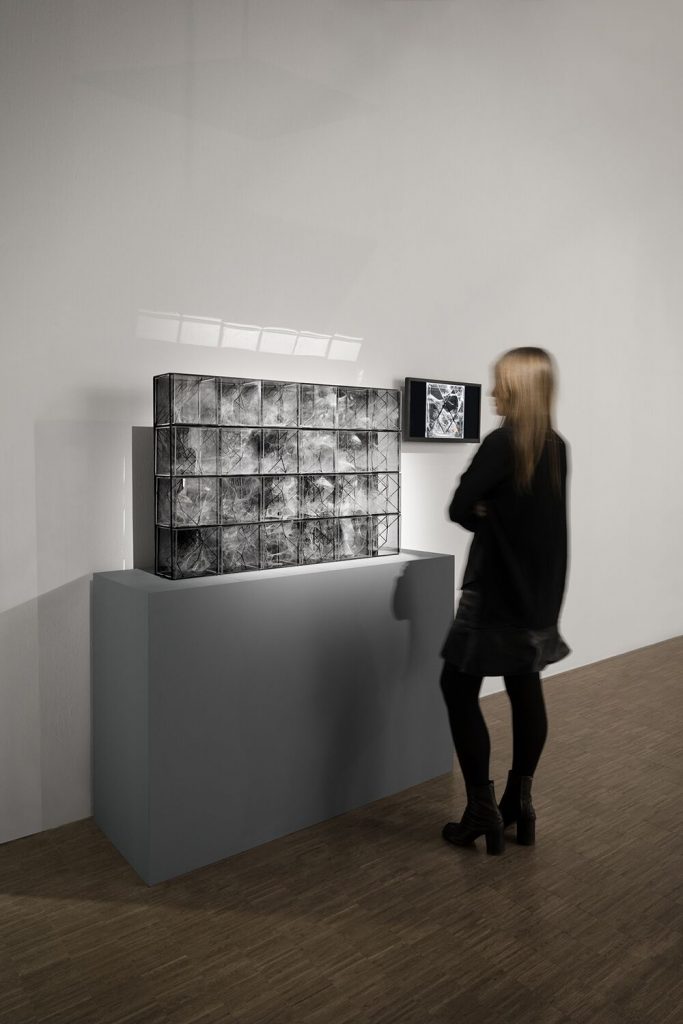Digital technology and the human form have come together in Paris, putting the wonders of 3D printing on full display too in “La Fabrique du vivant.’ The exhibit, translating to ‘The Fabric of the living,’ runs at the Centre Pompidou from February 20 to April 15, 2019. Claudia Pasquero and Marco Poletto, ecoLogicStudio founders are participating—along with research partners from the Urban Morphogenesis Lab at The Bartlett UCL, the Synthetic Landscape Lab at Innsbruck University, and the CREATE Group/WASPHub Denmark at the University of Southern Denmark.
The exhibit is part of the Mutations-Créations series and is curated by both Marie-Ange Brayer and Olivier Zeitoun. The concept of this unique show melds both living and artificial life, causing exhibitgoers to consider the interaction between ‘creation, and fields of life science, neuroscience, and synthetic biology.’ The juxtaposition of life and artifice is meant to jar the viewer, as they examine modern, urban forms in art and show the ‘miniaturization, distribution and intelligence of manmade urban networks’ in humans, while displaying the evolution of artificial life too. We have viewed many different creative works via 3D printing over the years to include large scale animal forms, darker fantasy pieces, and interactive exhibitions, but ‘La Fabrique du vivant’ is definitely not your average 3D printed art, offering a unique, highly intellectualized path to understanding the connection between people and the digital age.
The 3D printed ‘in-human gardens,’ are contributed by architects Pasquero and Poletto. The fabricated forms are meant to portray for the human and the inhuman, while addressing both ‘human rationality’ and futuristic artificial intelligence; in fact, they are supposed to viewed as having been developed in partnership with (now keep an open mind here!) ‘colonies of photosynthetic cyanobacteria, H.O.R.T.U.S. XL Astaxanthin.g, and a collective of Asian Fawn Tarantulas, XenoDerma.’
A recent press release explaining more about the exhibit defines H.O.R.T.U.S. XL Astaxanthin.g as an algorithm mimicking coral substratum through 3D printing. The architects used 400-micron layers in their fabrication efforts. Detailing further, they explain that these layers were supported by 46 mm triangular units and divided into 18.5 cm hexagonal blocks.
“Photosynthetic cyanobacteria are inoculated on a biogel medium into the individual triangular cells, or bio-pixel, forming the units of biological intelligence of the system. Their metabolisms, powered by photosynthesis, convert radiation into actual oxygen and biomass. The density-value of each bio-pixel is digitally computed in order to optimally arrange the photosynthetic organisms along iso-surfaces of increased incoming radiation. Among the oldest organisms on Earth, cyanobacteria’s unique biological intelligence is gathered as part of a new form of bio-digital architecture,” states the press release.
XenoDerma is defined as a spider web morphogenesis created with 3D printed scaffolding:
“Spiders’ minds, in this case Asian Fawn Tarantulas, do not entirely reside in their bodies, as their webs constitute a form of spatial thinking. Information from their webs become an integral part of their cognitive systems. The behavior of the spiders and the production of silk is re-programmed in XenoDerma through the design of the 3D printed substructure and of its geometrical features. The result consciously seeks productive ambiguity, revealing in the alien beauty of its silky morphologies, an intelligence that resides somewhere at the intersection of the biological, technological and digital realms.”
The pieces were created by a multidisciplinary team led by the two architect/designers, using a large-scale 3D printer capable of high resolution to achieve ‘non-human agency mediated by spatial substructures.’ The artwork is created on a 1:1 scale prototype as the artists see it, on par with other living architectures and an emerging generation of ‘thick biophilic architectural skins receptive to urban life.’ Find out more about the exhibit here.
Discuss this article and other 3D printing topics at 3DPrintBoard.
[Source / Images: ecoLogicStudio]Subscribe to Our Email Newsletter
Stay up-to-date on all the latest news from the 3D printing industry and receive information and offers from third party vendors.
You May Also Like
3D Printing Financials: Fathom Struggles in Financial Quicksand During Critical Transition
Facing a year of key transitions and financial pressures, Fathom (Nasdaq: FTHM) has filed its annual report for 2023 with the U.S. Securities and Exchange Commission (SEC). The document outlines...
Latest Earnings Overview for Australian 3D Printing Firms Titomic and AML3D
Australian 3D printing manufacturing firms Titomic (ASX: TTT) and AML3D (ASX: AL3) reported their financial results for the period from July to December 2023, marking the first half of their...
3D Printing Webinar and Event Roundup: April 7, 2024
Webinars and events in the 3D printing industry are picking back up this week! Sea-Air-Space is coming to Maryland, and SAE International is sponsoring a 3D Systems webinar about 3D...
3D Printing Financials: Unpacking Farsoon and BLT’s 2023 Performance
In the Chinese 3D printing industry, two companies, Farsoon (SHA: 688433) and Bright Laser Technologies, or BLT (SHA: 688333), have recently unveiled their full-year earnings for 2023. Farsoon reported increases...






































